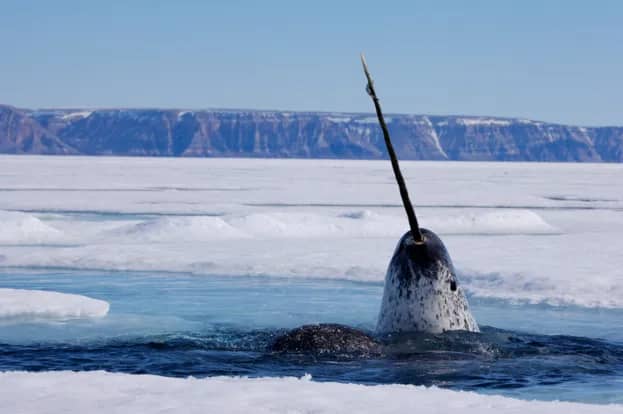Recent studies have revealed fascinating vital information about the behaviours of narwhals in the Arctic. These iconic marine mammals are known for their long, spiral tusks. Researchers have now observed how narwhals use these tusks for hunting Arctic char and interacting with their environment. The research marks the impact of climate change on narwhal behaviour and their adaptability to a warming Arctic.
About Narwhal
Scientific Classification:
Distinctive Feature – Tusk:
Habitat and Distribution:
Diet and Behavior:
Historical and Cultural Significance:
Evolutionary History:
Tusk Utilisation
A new research revealed that narwhals use their tusks to hunt Arctic char. They demonstrated remarkable dexterity and speed while manipulating their tusks to stun or kill fish. The tip of the tusk was particularly effective in investigating and influencing the behaviour of their prey.
Documented Behaviours
Researchers identified 17 distinct behaviours exhibited by narwhals. These included hunting techniques, social learning, and playful interactions. Notably, narwhals were observed engaging in ‘tusking’ behaviour, where they raise and cross their tusks, possibly for social interaction or competition assessment.
Interactions with Other Species
The study also documented interactions between narwhals and other species. This included kleptoparasitism, where narwhals compete with glaucous gulls for food. Such interactions highlight the complex dynamics within the Arctic ecosystem.
Impact of Climate Change
The research sheds light on how narwhals are adapting to changes in their environment. As ice patterns shift and prey availability fluctuates due to global warming, understanding these behaviours becomes crucial. The findings tell the importance of ongoing research in assessing the impacts of climate change on marine life.
Significance of the Study
This study contributes to the understanding of narwhal behaviour and ecology. It opens avenues for further research on how these marine mammals cope with environmental changes. The use of drones in wildlife research has proven invaluable, allowing for non-invasive observation.

Leave a Reply